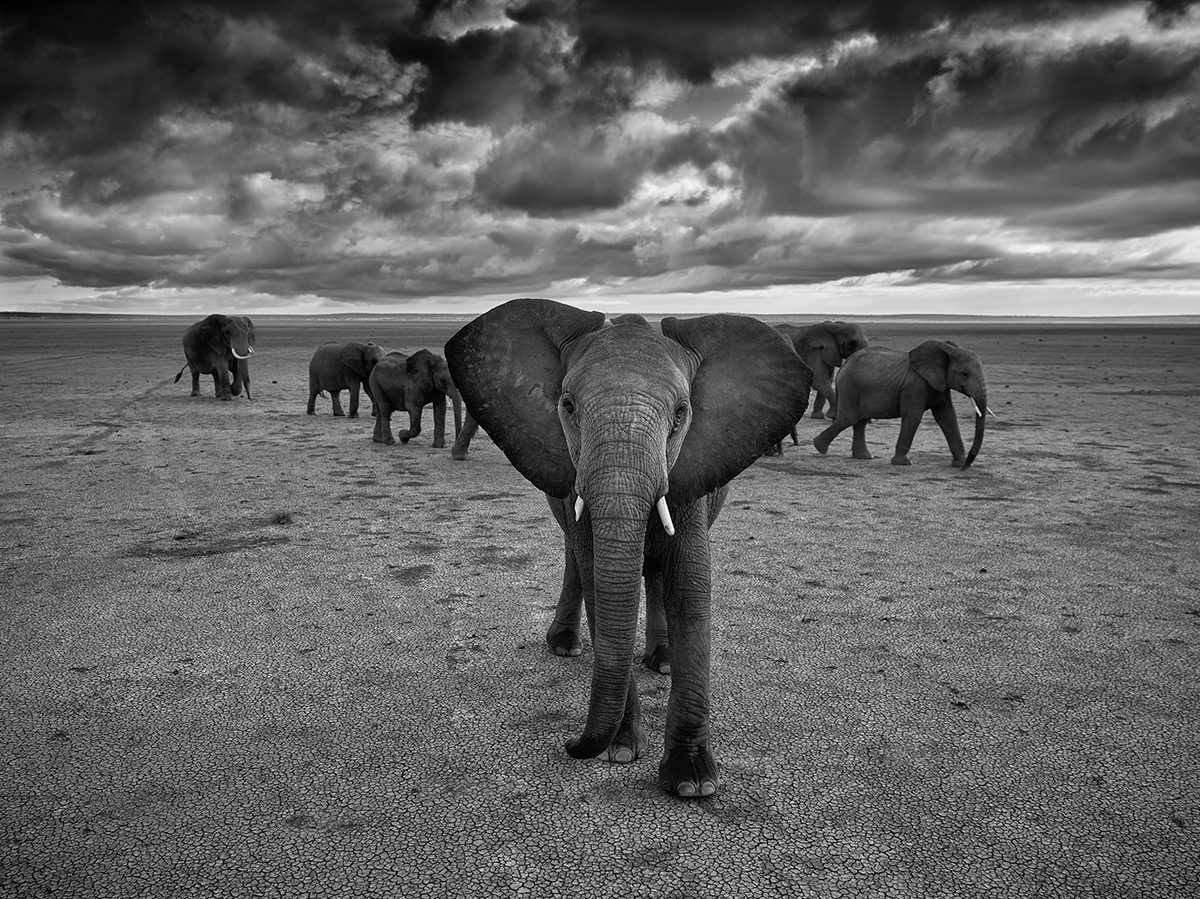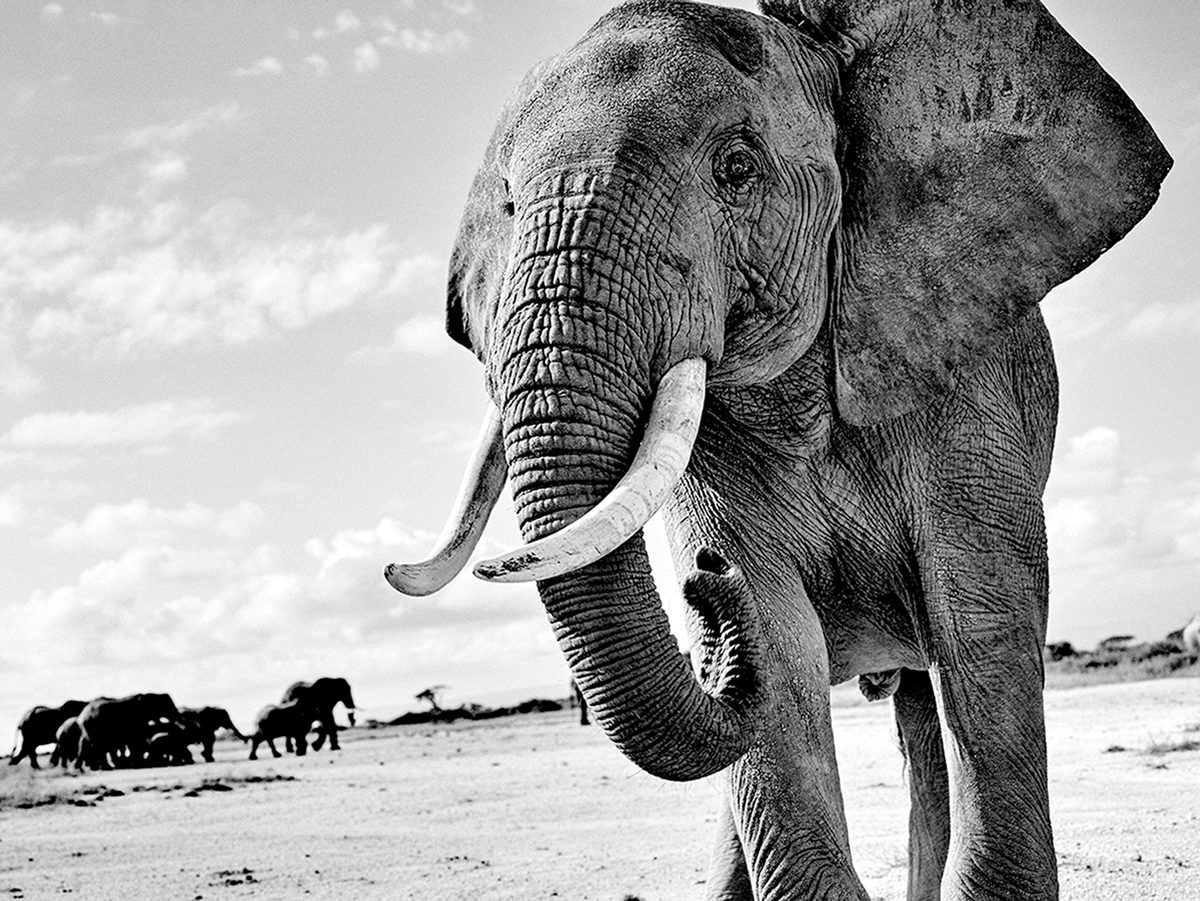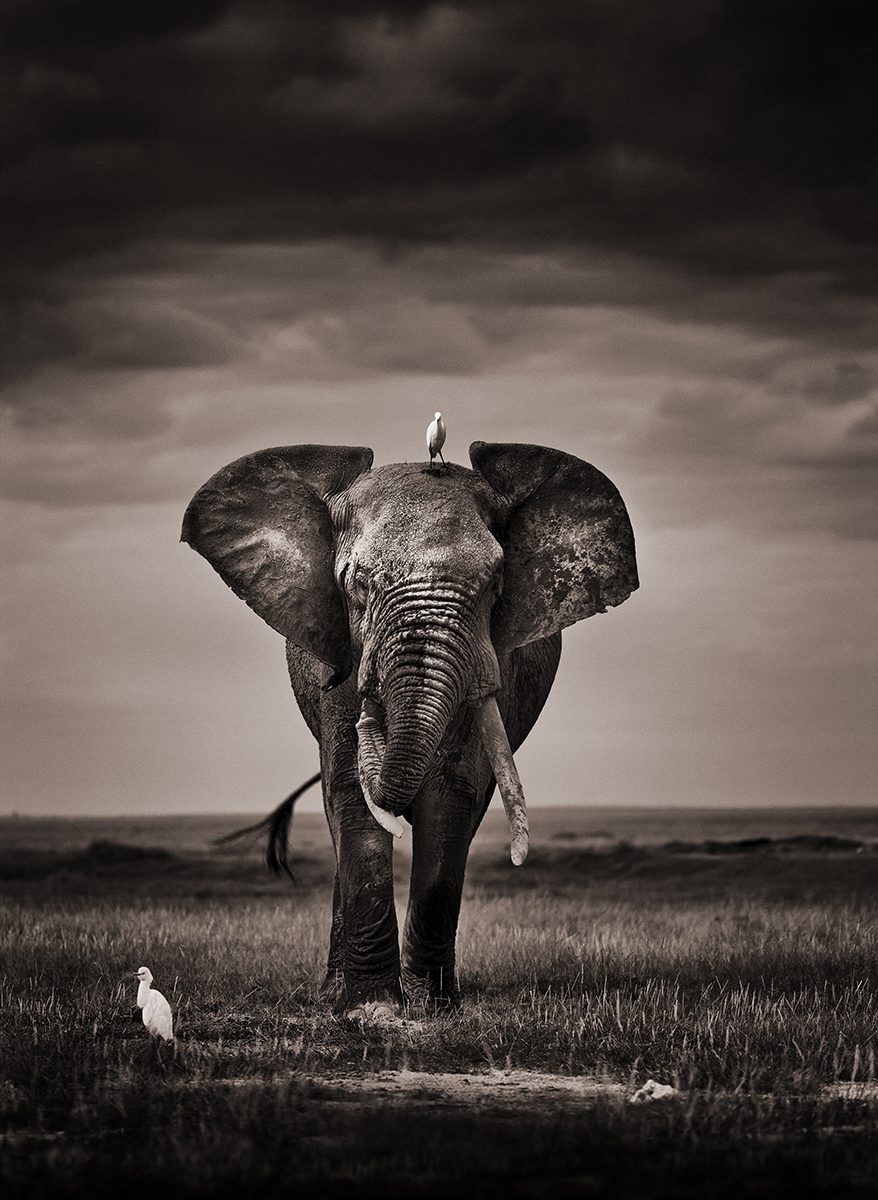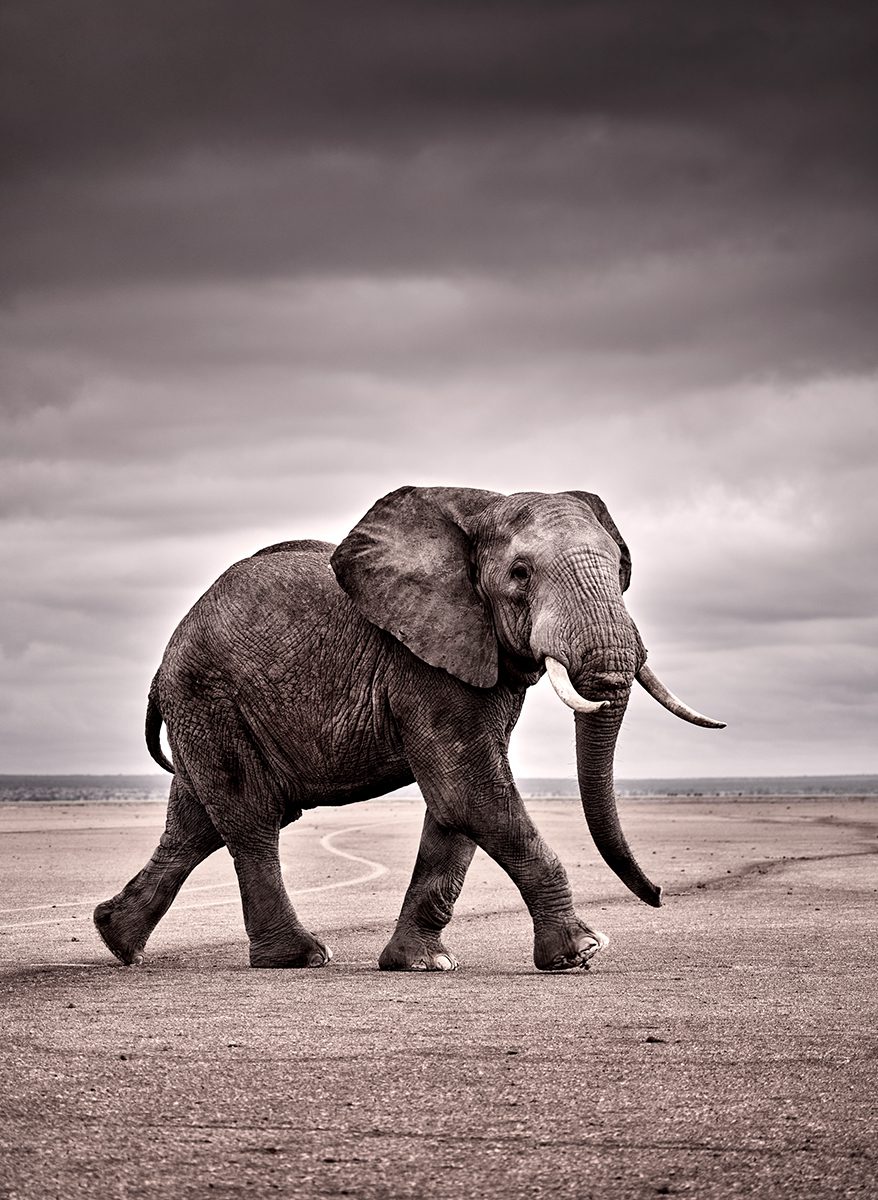Saving Elephants Posted On 28th April 2022 To Magazine & Stories

My love of black and white photography started back in college processing and printing images. The film of choice being FP4. and printing fibre based prints. In the beginning as a photographer most of my work was B/W. Spending much time in the dark room printing. Unfortunately time was something that was running out. As a professional you have the the funds but you don’t have the time. So I moved away from printing for a while and concentrated on shooting.

Another-day-in-the-office
One thing I learned photographing wildlife
I started photographing elephants 20 years ago and in Kenya for fifteen years. It’s important to have personal projects and to spend time on things that interest you. One thing I learned photographing wildlife…..or at least the way I do. You need to be patient. I like to wait for things to happen, Elephants can be really fast but spotting them at a distance you can wait two or three hours before they arrive. When they do appear they might not be happy to see you, the light might not be right, you have to be prepared not to take any images, otherwise it’s just wasted film.
- Elephant stands on guard while herd passes behind safely
I love B/W
I’m not a particular fan of blasting through shots with my finger on the trigger, or remote camera set ups with distorted floor level wide angle images. I prefer to take the image I like looking at through the view finder. I love B/W for this subject, (most images were shot on ILFORD FP4), it really suits the textures, rugged landscape and dramatic skies. Recently I’ve been hand printing the cover image using Ilford Multigrade fiberbased Warm tone. The project was always to produce a hard backed book. And Lockdown gave me the time to pull everything together and get the book funded and printed.
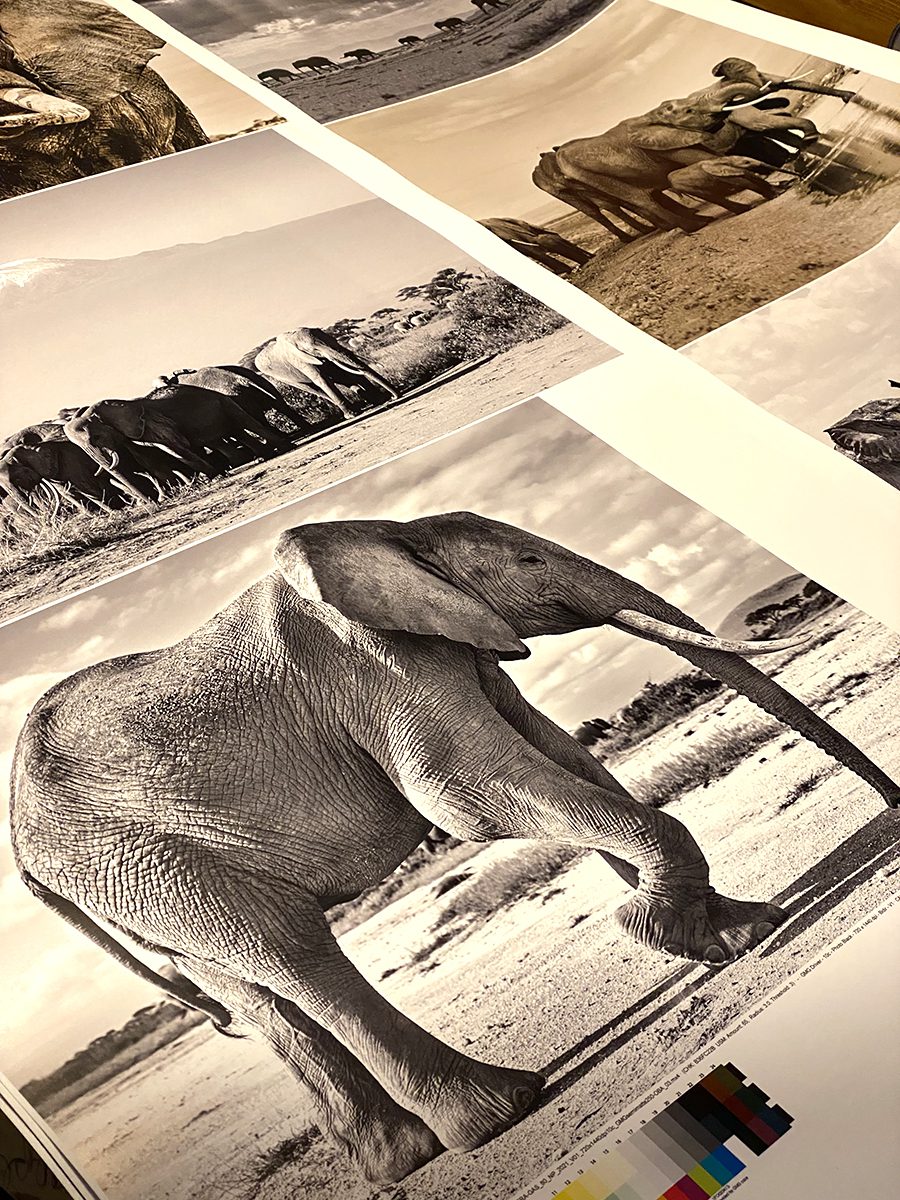
Proofs while printing book
Foreword by Virginia McKenna and Will Travers
In 2000, Coates’s began a different personal photographic project. He travelled to Sri Lanka to photograph Asian elephants. that year his image of an orphan baby elephant reached the semifinals in the national history museum wildlife award. Later Alwyn met underwater cameraman Dan Travers, who recommended he visit Kenya to Photograph the Saving Elephants book for his family’s charity, Born Free Foundation. In 2021, one of Coates’s images of an elephant herd was recently used for a billboard campaign in Hong Kong to help end illegal ivory trade with charity AquaMeridian. Alwyn’s book received significant funding to design and print the most beautiful book Saving Elephants.
To date the next 600 books sold at £65.00 will go towards the £50,000.00 goal for this elephant project and help save elephants.
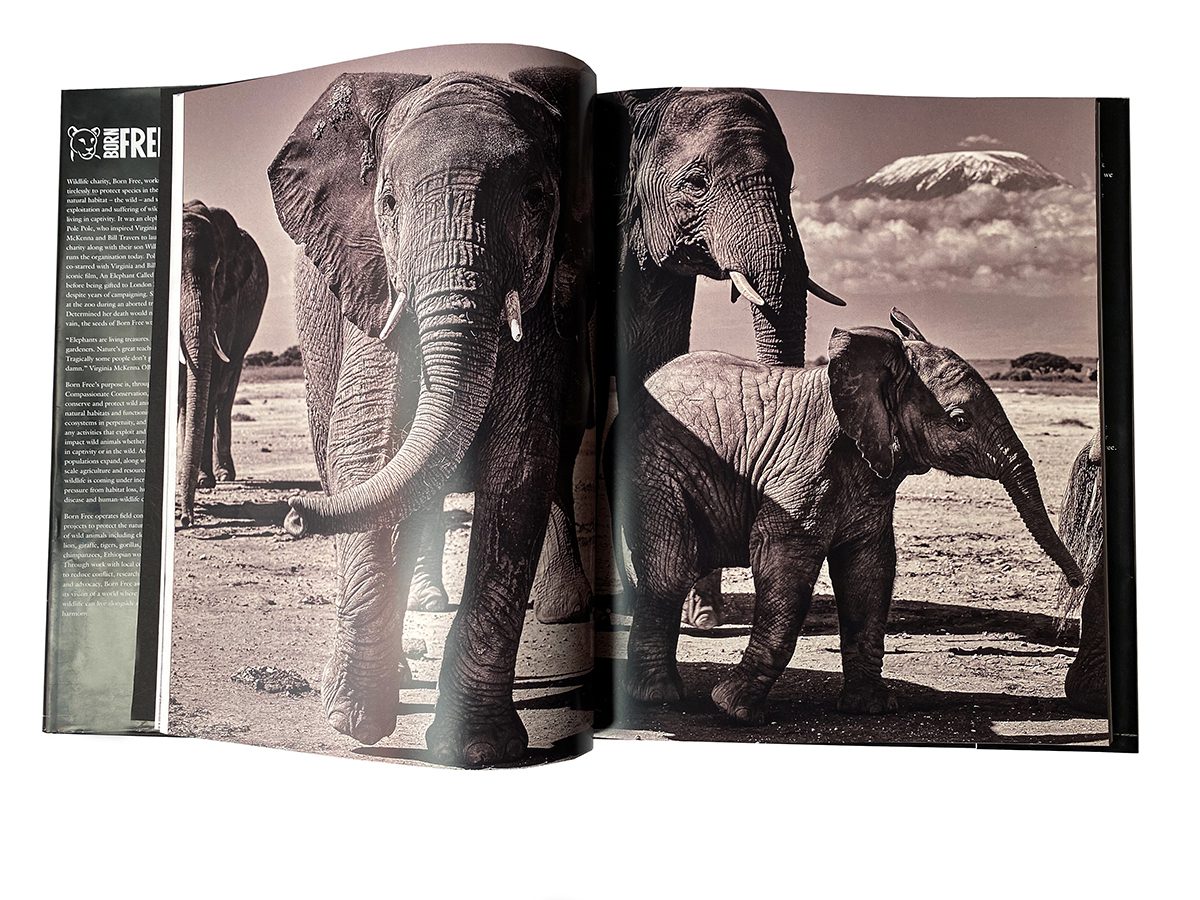
saving_elephants
The spark that lit the flame
It was the death of an elephant that started Born Free. Little Pole Pole, caught from the wild by the Kenya Government of the day, as a gift for the London Zoo. Her untimely demise in 1983, aged just 17. This was the spark that lit the flame. And here we are, nearly 40 years on. Still fighting against captive exploitation. We are still campaigning for compassionate conservation and a world that keeps wildlife in the wild. So it is not detained for our ‘pleasure’, innocent victims of human vanity and self-importance. That’s why Alwyn’s images are so telling. They remind us of what we’re fighting for. The open spaces, the endless skies, and the elephants - dozens, hundreds, thousands of elephants just living. Doing what wild elephants do. Through his images, against the backdrop of Kenya’s magical Amboseli National Park, under the gaze of Mount Kilimanjaro, we witness elephants as they should be – loving and playing, tussling and fighting, feeding, drinking, resting and caring for each other as only elephant families can.
- elephant and egrets
- Walk on by
The wild is tough
We know the wild is tough. The droughts, the baking sun, the loss of habitat as fences start to criss-cross their land. We understand that elephants sometimes make for uneasy neighbours. That conflict can happen, especially when delicious crops are planted within a trunk’s reach. We know that, on top of all that, in some countries, hundreds of elephants are still hunted as trophies by a wealthy elite - for ‘fun’. But sometimes, even knowing what we know, and all too aware of the work that still needs to be done. So we can make this an elephant-friendly world. It’s important to stop and marvel at this mighty being that can fell a tree in seconds, and yet pick up a fragile seed with the ‘fingers’ on the end of its nose, caress and calm an anxious elephant child, sense the coming storm long before it is seen, ‘talk’ in a language we mere humans cannot hear.
Alwyn reminds us that in our world of turmoil and haste and rush and uncertainty, we must make room for miracles – and one of them is the elephant, wild and free.
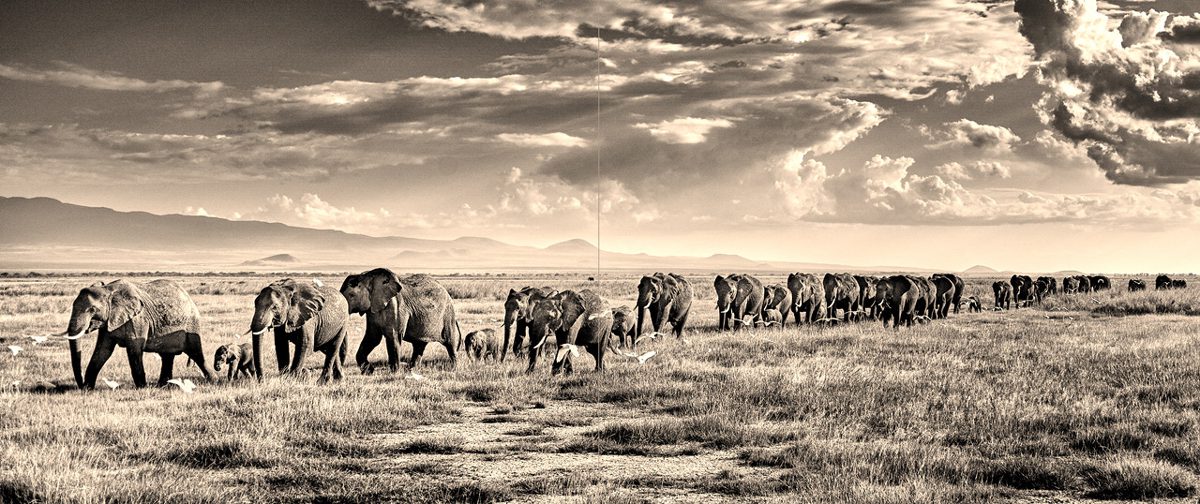
Herd Instinct. Along the elephant corridor
Saving elephants the book
Limited Edition.
Large Format | Hard backed | 30x37cm | 136 pages
Over 75 black and white and toned photographs
100% profits from book sales is donated to the Born Free Foundation 'Saving Meru's Giants'
All £65.00 for the next 600 books will be donated to the project.
£65 GBP + Shipping | £125 GBP + Shipping for copies signed by Alwyn Coates
Available to buy from www.savingelephants.co.uk

About The Author

Alwyn R Coates
Alwyn Coates (Yorkshire, UK) is an award-winning photographer, who most recently won gold in the category for advertising and fashion in the Prix de la Photographie Paris, 2020.
After five years studying art and photography. Coates’s reputation grew in the late 80’s and 90s whilst shooting ad campaigns for luxury brands such as Givenchy and Rémy Martin. From this time forward he shot a 1990’s best selling poster for Athena, titled Beyond City Limits; numerous celebrity commissions; and the book cover for Jerry Hall: My Life in Pictures. Norman Parkinson had the back cover.
Coates won a British National Heritage award for portraits of steel workers during Britains declining steel industry. Presented by David Hockney at the National Museum of Photography, Film & Television. He hand processed and printed black and white images photographed on a large format plate camera.
Coates’s work is included in the 2009 exhibition and book: Robin Bell’s Silver Footprint: 35 Years of Darkroom Printing, which features 126 photographers selected by the UK’s master black and white printer: Robin Bell. Also included in Alistair Morrison’s ‘Hidden Gems’ Book and in support of Variety Club the Children’s Charity exhibited at Getty Images Gallery London. 25 of the UK’s top photographers including Mary McCartney, Terry O’Neill, a unique collection of great photography.
Insta – @savingelephants.co.uk







